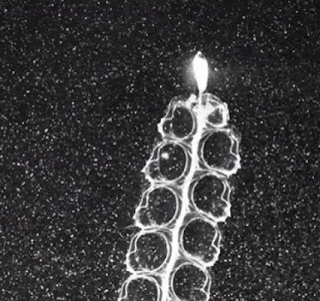Tuesday, October 6, 2015
Marine Animal Colony is a Multi-Jet Swimming Machine
Marine animals that swim by jet propulsion, such as squid and jellyfish, are not uncommon. But it’s rare to find a colony of animals that coordinates multiple jets for whole-group locomotion. This week in Nature Communications (http://goo.gl/xS4YQc), scientists report on a colonial jellyfish-like species, Nanomia bijuga, that uses a sophisticated, multi-jet propulsion system based on an elegant division of labor among young and old members of the colony. This locomotive solution, the team suggests, could illuminate the design of underwater distributed-propulsion vehicles.
“The young members have what we call a long lever arm,” Costello says. “They are like the handle of a door. If you push on a door near its hinges—its axis of rotation—the door is hard to open. But if you push on the door handle, which is far from the axis of rotation, the door opens easily. A little force placed with a big lever arm has a big effect on turning.”
The young colony members allow N. bijuya to rapidly alter course and even completely reverse its direction of swimming. As new nectophores are budded at the tip of the nectosome, the older ones move farther back, where their larger contractions are useful for thrust. “These patterns permit all members of the colony to make important contributions to the propulsion and maneuvering traits that are critical for the success of N. bijuya in its natural environment.”
Below: Laser light sheet illumination of particle tracks generated during forward, synchronous swimming by the siphonophore Nanomia bijuga. This type of synchronized jet production by all of the nectophores typically occurs during rapid escape responses from threatening stimuli or when the colony initially begins swimming from rest.
Credit: John H. Costello.
Subscribe to:
Post Comments (Atom)

No comments:
Post a Comment